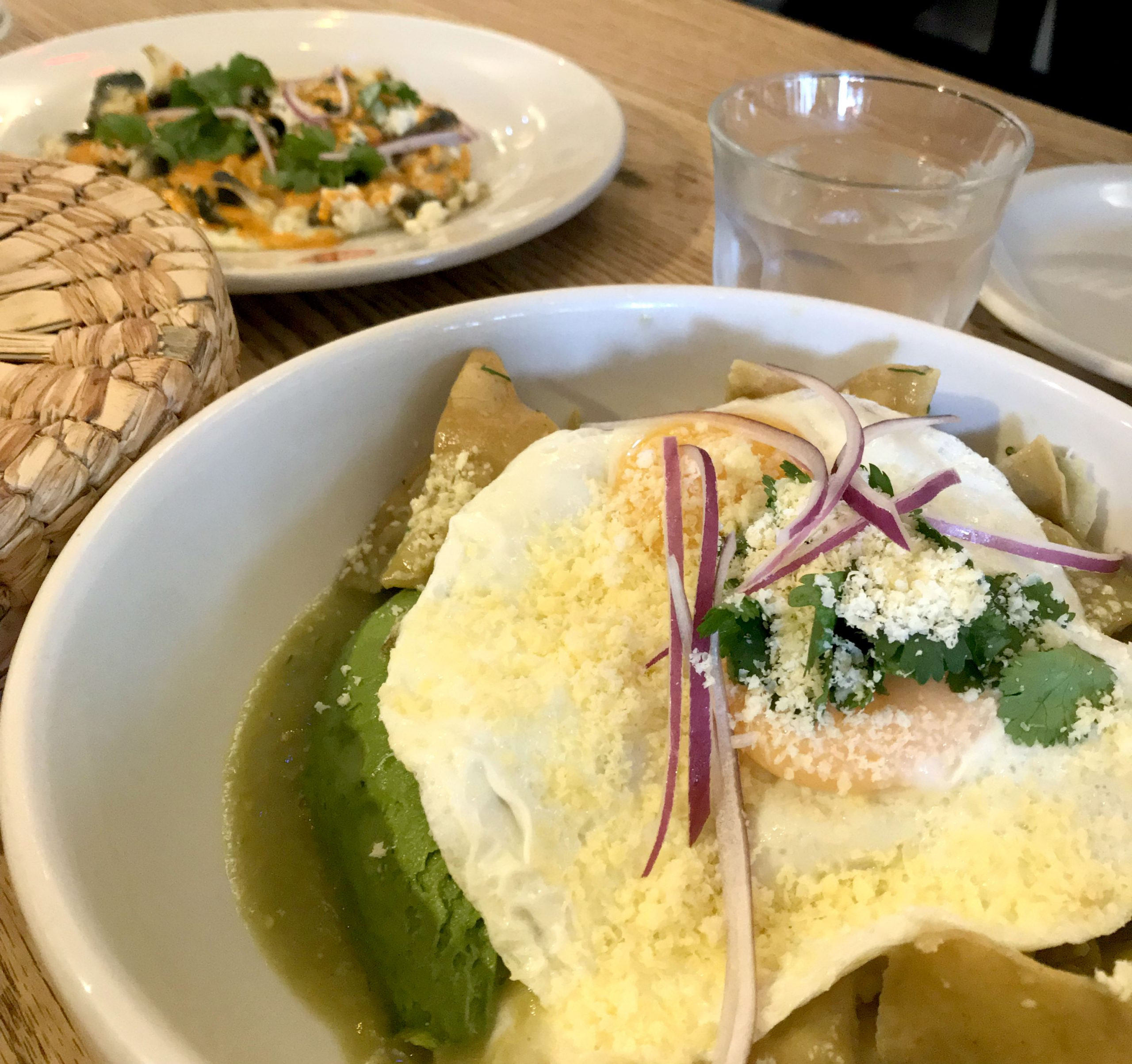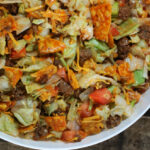What Do People In Mexico Eat For Breakfast? Discover the vibrant and delicious world of Mexican breakfast cuisine with gaymexico.net! We’ll take you on a culinary journey through traditional dishes, regional specialties, and LGBTQ+-friendly spots where you can savor the best morning meals Mexico has to offer. Ready to explore the tastes of Mexico?
1. What Makes Mexican Breakfasts Unique and Delicious?
Mexican breakfasts are a delightful blend of flavors, textures, and traditions. They often feature a combination of savory and spicy elements, utilizing fresh ingredients and time-honored cooking techniques.
- Emphasis on Fresh Ingredients: Mexican cuisine prioritizes locally sourced ingredients like corn, beans, chilies, and fresh produce.
- Bold Flavors: The use of chilies, spices, and herbs creates a distinctive and flavorful experience.
- Hearty and Filling: Many Mexican breakfast dishes are designed to provide sustained energy throughout the morning.
- Cultural Significance: Breakfast in Mexico is often a social occasion, enjoyed with family and friends.
2. What Are Some Iconic Mexican Breakfast Dishes?
Mexico boasts a wide array of breakfast dishes, each with its unique appeal. Here are some of the most popular and beloved options:
2.1. Chilaquiles: A Breakfast of Champions
Chilaquiles are arguably the most popular Mexican breakfast dish. They consist of deep-fried tortilla chips simmered in either a red or green salsa, topped with cream, cheese, and onion. You can find them everywhere!
 A plate of vibrant chilaquiles with red sauce, cream, cheese, and onion
A plate of vibrant chilaquiles with red sauce, cream, cheese, and onion
- Variations: Chilaquiles can be customized with various toppings such as eggs, shredded chicken, avocado, or cecina (salted beef).
- Red vs. Green Sauce: The choice between red (tomato-based) and green (tomatillo-based) salsa is a matter of personal preference.
- Soggy vs. Crunchy: Some prefer their chilaquiles slightly soggy, while others enjoy the crunch of the tortillas.
2.2. Tamales and Atole: A Classic Combo
Tamales, found throughout central and southern Mexico, are patties made from masa (corn dough) and lard, wrapped around a sweet or savory filling inside a corn husk or banana leaf.
- Atole: A warm, thick drink made with corn dough, water, sugar, and cinnamon, often served with tamales.
- Champurrado: A variation of atole made with chocolate.
- Regional Variations: Tamale fillings and preparation methods vary widely depending on the region.
2.3. Café de Olla and Pan Dulce: A Sweet Start
Café de olla (coffee from the pot) is a traditional Mexican coffee brewed with coffee beans, cinnamon, and piloncillo (unrefined cane sugar). Paired with pan dulce (sweet bread), it’s a simple yet satisfying breakfast.
 A cup of steaming cafe de olla next to a selection of colorful pan dulce
A cup of steaming cafe de olla next to a selection of colorful pan dulce
- Café con Leche: A popular alternative, consisting of warm milk and instant coffee.
- Pan Dulce Varieties: Mexican sweet breads come in various shapes, sizes, and flavors, such as conchas, orejas, and rebanadas.
2.4. Molletes: A Simple and Satisfying Option
Molletes are an easy-to-make breakfast consisting of bolillo bread rolls topped with refried beans and melted cheese.
- Pico de Gallo: A common topping, adding freshness and flavor.
- Meat Variations: Molletes can be enhanced with toppings like ham, chorizo, or bacon.
3. What Are Some Regional Breakfast Specialties in Mexico?
Mexico’s diverse regions offer unique breakfast experiences, reflecting local ingredients and culinary traditions.
| Region | Specialty | Description |
|---|---|---|
| Yucatán | Huevos Motuleños | Fried eggs served on tortillas with black beans, cheese, ham, and a special sauce. |
| Oaxaca | Tlayudas | Large, thin, crispy tortillas topped with beans, cheese, lettuce, avocado, and meat. |
| Veracruz | Huevos Rancheros | Fried eggs served on tortillas with salsa ranchera, often accompanied by beans and cheese. |
| Jalisco | Birria | A flavorful stew made with goat or beef, simmered in a rich broth with chilies and spices. |
| Mexico City | Enchiladas | Tortillas filled with meat, cheese, or beans, covered in a chili sauce and topped with cheese and cream. |
4. Where Can LGBTQ+ Travelers Find the Best Breakfasts in Mexico?
Mexico is becoming increasingly welcoming to LGBTQ+ travelers, and many cities offer a vibrant and inclusive culinary scene. Here are some top destinations and recommendations:
4.1. Puerto Vallarta: A Gay Paradise with Delicious Breakfasts
Puerto Vallarta is a renowned LGBTQ+ destination with a wide range of restaurants and cafes catering to diverse tastes.
- River Cafe: Offers a beautiful setting and a diverse breakfast menu with Mexican and international options.
- Fredy’s Tucan: A popular spot known for its delicious chilaquiles and friendly atmosphere.
- Page in the Sun: A charming bookstore and cafe serving breakfast and brunch with a focus on fresh, local ingredients.
4.2. Mexico City: A Cosmopolitan Hub with Culinary Delights
Mexico City boasts a thriving LGBTQ+ scene and a diverse culinary landscape.
- Lalo!: A trendy spot known for its creative chilaquiles and vibrant atmosphere.
- El Cardenal: A classic Mexican restaurant serving traditional breakfast dishes with a touch of elegance.
- Panaderia Rosetta: A renowned bakery offering a wide selection of pastries and coffee.
4.3. Guadalajara: A Cultural Gem with Authentic Flavors
Guadalajara offers a more traditional Mexican experience with a growing LGBTQ+ presence.
- La Chata de Guadalajara: A popular spot for traditional Mexican breakfasts, including birria and menudo.
- Nueve Esquinas: A historic neighborhood with several cafes and restaurants serving breakfast.
5. How Can You Make Mexican Breakfasts at Home?
Bringing the flavors of Mexico to your own kitchen is easier than you might think. Here are some tips and recipes to get you started:
5.1. Chilaquiles Recipe
Ingredients:
- 1 bag of tortilla chips
- 2 cups of red or green salsa
- 1/2 cup of cream
- 1/4 cup of grated cheese
- 1/4 cup of chopped onion
- Optional toppings: eggs, shredded chicken, avocado
Instructions:
- Spread the tortilla chips on a baking sheet.
- Pour the salsa over the chips and bake at 350°F (175°C) for 10-15 minutes, or until the chips are slightly softened.
- Top with cream, cheese, and onion.
- Add your desired toppings.
5.2. Molletes Recipe
Ingredients:
- 2 bolillo rolls
- 1 can of refried beans
- 1 cup of shredded cheese
- 1/2 cup of pico de gallo
Instructions:
- Cut the bolillo rolls in half horizontally.
- Spread refried beans on each half.
- Top with shredded cheese.
- Broil in the oven until the cheese is melted and bubbly.
- Top with pico de gallo.
5.3. Café de Olla Recipe
Ingredients:
- 4 cups of water
- 1/2 cup of ground coffee
- 1/4 cup of piloncillo
- 1 cinnamon stick
Instructions:
- In a pot, combine water, piloncillo, and cinnamon stick.
- Bring to a boil and then reduce heat to a simmer.
- Add the ground coffee and simmer for 5-10 minutes.
- Strain the coffee and serve.
6. What Are Some Tips for Enjoying Breakfast in Mexico as an LGBTQ+ Traveler?
Traveling to Mexico as an LGBTQ+ individual can be an enriching experience. Here are some tips to ensure a safe and enjoyable culinary adventure:
- Research LGBTQ+-Friendly Establishments: Look for restaurants and cafes that are known for their inclusive atmosphere.
- Learn Basic Spanish Phrases: Knowing basic phrases can help you communicate with locals and navigate menus.
- Be Aware of Local Customs: While Mexico is becoming more accepting, it’s important to be aware of local customs and sensitivities.
- Connect with Local LGBTQ+ Communities: Reach out to local LGBTQ+ organizations or online communities for recommendations and support.
- Trust Your Instincts: If you feel uncomfortable in a particular establishment, don’t hesitate to leave.
7. What Are the Health Benefits of Traditional Mexican Breakfasts?
Many traditional Mexican breakfast dishes offer nutritional benefits:
- Fiber: Beans and corn provide a good source of fiber, aiding digestion and promoting satiety.
- Protein: Eggs, meat, and cheese contribute to protein intake, supporting muscle growth and repair.
- Vitamins and Minerals: Fresh produce like tomatoes, onions, and avocados provide essential vitamins and minerals.
8. How Does Breakfast in Mexico Reflect the Country’s Culture and History?
Mexican breakfast traditions are deeply rooted in the country’s history and culture.
- Indigenous Influences: Corn, beans, and chilies, staples of Mexican cuisine, have been cultivated in the region for centuries.
- Spanish Influences: The introduction of ingredients like cheese and meat during the Spanish colonial period has shaped modern Mexican breakfasts.
- Regional Variations: The diverse regional cuisines of Mexico reflect the unique ingredients and culinary traditions of each area.
9. What Are Some Modern Trends in Mexican Breakfast Cuisine?
While traditional dishes remain popular, Mexican breakfast cuisine is constantly evolving.
- Fusion Cuisine: Chefs are experimenting with incorporating international flavors and techniques into Mexican breakfast dishes.
- Vegetarian and Vegan Options: An increasing number of restaurants are offering vegetarian and vegan alternatives to traditional dishes.
- Sustainable Practices: Many establishments are committed to using locally sourced and sustainably produced ingredients.
10. Why Is Visiting Gaymexico.net the Best Way to Plan Your LGBTQ+ Trip to Mexico?
Planning an LGBTQ+-friendly trip to Mexico can be overwhelming, but gaymexico.net is here to help.
- Comprehensive and Up-to-Date Information: We provide detailed guides to LGBTQ+-friendly destinations, events, and businesses in Mexico.
- Community-Driven Content: Our website features articles, reviews, and recommendations from LGBTQ+ travelers and locals.
- A Safe and Inclusive Space: We are committed to creating a welcoming and supportive community for LGBTQ+ individuals interested in Mexico.
- Connect with the Community: Find valuable resources and support for LGBTQ+ individuals in Mexico.
- Detailed Travel Guides: Explore LGBTQ+-friendly cities such as Puerto Vallarta, Mexico City and Cancun.
Ready to embark on a culinary adventure in Mexico? Visit gaymexico.net today to discover the best breakfast spots, plan your itinerary, and connect with the LGBTQ+ community!
Address: 3255 Wilshire Blvd, Los Angeles, CA 90010, United States
Phone: +1 (213) 380-2177
Website: gaymexico.net
Frequently Asked Questions About Mexican Breakfasts
1. Is Mexican breakfast spicy?
Some Mexican breakfast dishes can be spicy, depending on the salsa or chilies used. However, many options are mild or can be customized to your preferred spice level.
2. What is a typical Mexican breakfast?
A typical Mexican breakfast might include chilaquiles, huevos rancheros, tamales, or café de olla with pan dulce.
3. Are there vegetarian options for breakfast in Mexico?
Yes, many restaurants offer vegetarian options such as molletes, huevos rancheros without meat, or chilaquiles with vegetarian toppings.
4. What is the best time to eat breakfast in Mexico?
Breakfast is typically eaten between 7:00 AM and 10:00 AM in Mexico.
5. What is atole made of?
Atole is traditionally made with corn dough, water, sugar, and cinnamon.
6. What is piloncillo?
Piloncillo is a type of unrefined cane sugar that is commonly used in Mexican cuisine.
7. Are there any regional breakfast specialties I should try?
Yes, be sure to try huevos motuleños in Yucatán, tlayudas in Oaxaca, and birria in Jalisco.
8. Is Mexico safe for LGBTQ+ travelers?
Mexico is generally becoming more accepting of LGBTQ+ individuals, but it’s important to be aware of local customs and sensitivities.
9. What are some LGBTQ+-friendly destinations in Mexico?
Puerto Vallarta, Mexico City, and Guadalajara are popular LGBTQ+-friendly destinations in Mexico.
10. Where can I find more information about LGBTQ+ travel in Mexico?
Visit gaymexico.net for comprehensive guides, recommendations, and resources for LGBTQ+ travelers in Mexico.

